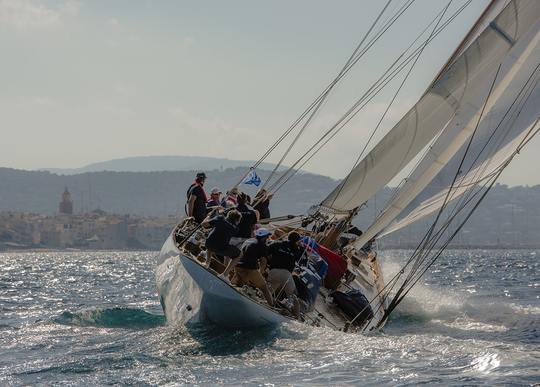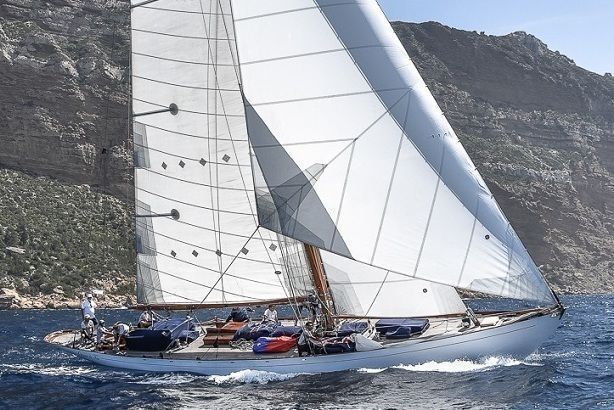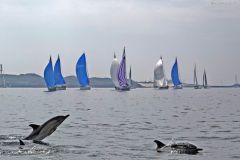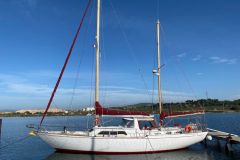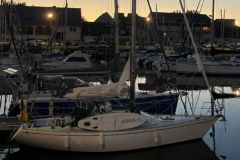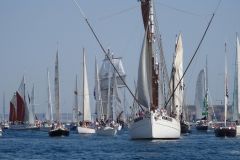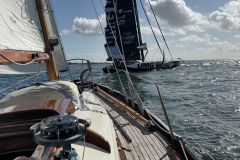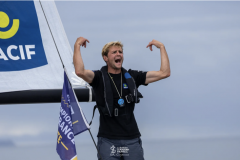A splendor designed by Nicholson
In 1936, Charles Ernest Nicholson was the most prominent architect of the time. As the head of the eponymous shipyard in Gosport, England, his pencil stroke and the quality of construction ensured in his yard gave him a serious reputation. The proximity of his shipyard to the Solent, the place where the Anglo-Saxon upper class regatta sailors fought, gave him a very good visibility. Architect of the monstrous Shamrock IV and Shamrock V for the America's Cup, he also designed numerous cruising yachts for several royal families around the world.
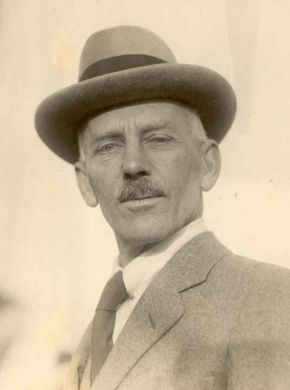
Ralph Hawks, commodore of the Royal Ocean Racing Club, asked him to design a classic capable of winning on the circuit of the time: Fastnet, Cowes Week, Channel Race, Cowes-Dinard and other classics in northern Europe. Nicholson designed a hull of 20.74m for a displacement of 38 tons. Her marconi cutter rig is typical of the 30's, with malet tail, bowsprit and yankee at the head. Named Fire Bird X, her sleek lines recall the elegance and lightness of the 12M JI, while benefiting from a more robust construction adapted to all sea and wind conditions, and sufficiently comfortable to cruise. Its slender arching hull is lined with teak for the live work and mahogany for the dead work, all on an alternation of two acacia frames for one steel frame.
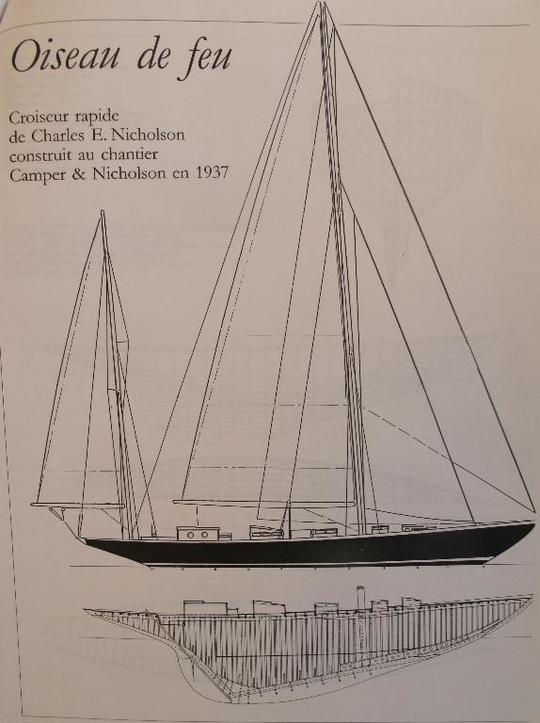
Until 1939, Fire Bird X will skim with panache all the regattas organized by the RORC. Dryed out and spared from the damages of the Second World War, she was sold after the conflict to Hugh M Crankshow, then to J.E Green, who continued to race her. Her look was modified with the removal of her bowsprit and her mallet tail, but her yawl rig allowed her to remain competitive with her rivals.
A reconversion in the cruise industry
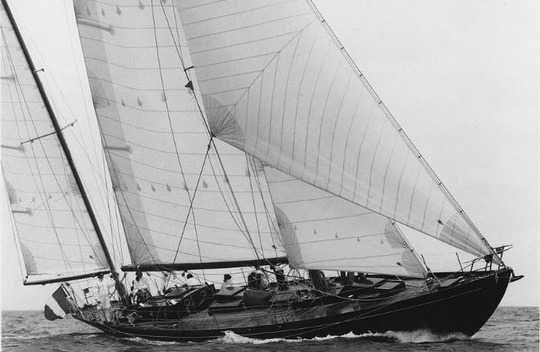
In 1962, Pierre Cointreau, the producer of the liqueur of the same name, bought it and renamed it Flame II. Preferring cruising to racing, the industrial bon vivant had a wine cellar adapted to the warm molded wooden saloon worthy of the name. Based in Southern Brittany, he will cruise for eight years. From 1970 to 1973, it was owned by the deputy of Loire-Atlantique and former minister Henri Rey who renamed it Vindellois II and took it to the Mediterranean.
A shipwreck, then a rebirth
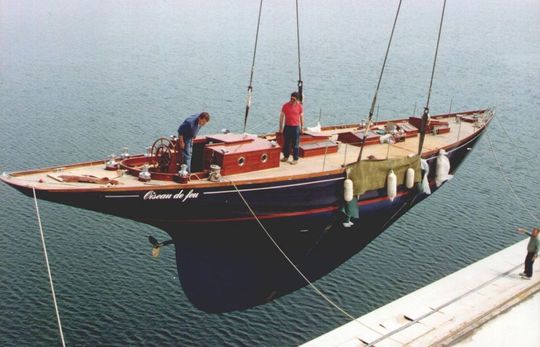
Sold in 1973 to Michel Perroud from Trinidad and Tobago, it was renamed after its original name, but in favor of the language of Molière. Oiseau de Feu will sail the regattas of the south of Brittany during a decade. In the fall of 1983, Oiseau de Feu was sheltered at anchor in the Auray River. A violent storm broke out, and the beautiful bird took its freedom, broke its moorings and ran aground on an oyster bed. Several planks were broken, and Oiseau de Feu was shipwrecked. After a delicate refloating, the injured hull was transported to the Rameau shipyard for repairs. After two seasons of coastal navigation in the Mediterranean, Oiseau de Feu was brought back to Morbihan to be laid up for four years.
A meticulous restoration for this historical monument
In Slavic culture, a firebird is a legendary bird from the folklore of Eastern Europe (Russia, Poland, Ukraine...). Adorned with glowing feathers and coming from a distant land, it represents at the same time a blessing and a curse for the one who captures it.
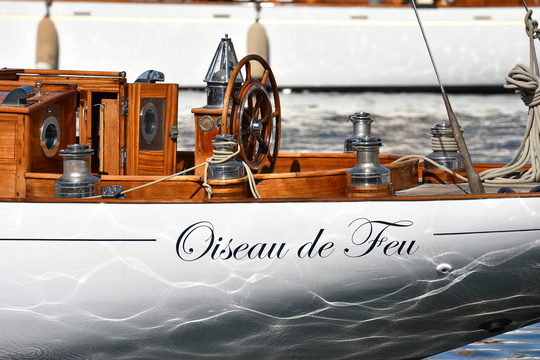
All this does not bother Pierre Lembo, who buys it in 1989. Oiseau de Feu has lost its beauty, and Pierre wants to give it back its former look. The Nicholson plan is then sent for restoration in the shipyard of Raymond Labbé, in Saint Malo. The Labbé shipyard is at the time the most competent in the restoration of such units. It is besides this shipyard that Eric Tabarly had chosen to restore his faithful Pen Duick, put back in the water the same year as the arrival of Oiseau de Feu.
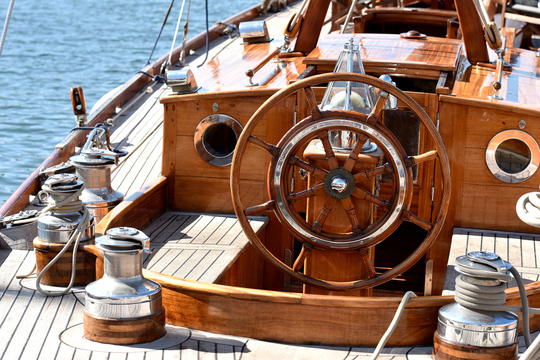
Everything is taken over and checked, from the keel to the masthead. And the results are severe. The fresh water accumulated during the four years at anchor has deteriorated the hull. Many floors will be changed, as well as the rudder, the stern and some parts of the keel. The deck will be entirely changed, the carpenters' team abandoning pine in favor of teak. All the interior fittings will be redone as they were in 1937, notably the multitude of moulded panels that make up the saloon and the cabins.
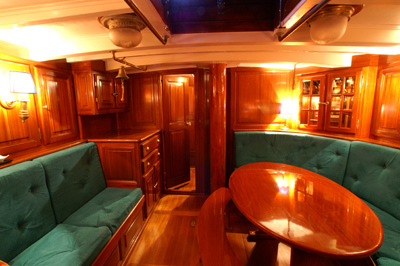
The naval architect Guy Ribadeau-Dumas designed a new, slimmer rig, the Spruce spars being replaced by Oregon pine. And it is after this work carried out in the rules of the art that Oiseau de Feu reaches the title of French historical monument, on November 6, 1992. After a few seasons in Brittany, it is now based in Marseille, where it is followed with attention by its current owner. Oiseau de Feu continues to skim the classic regatta circuit, with the same panache as at the beginning of the century.
